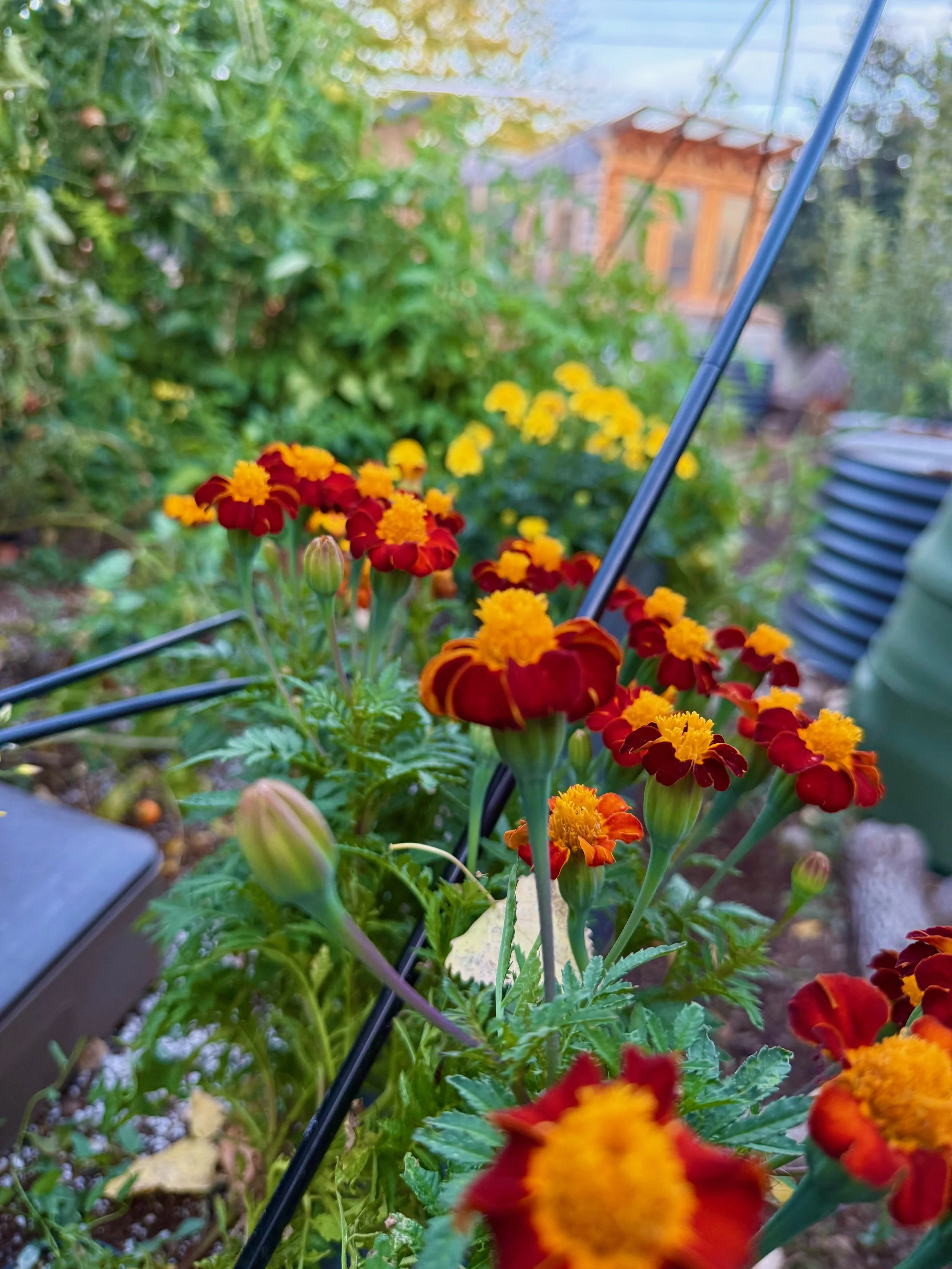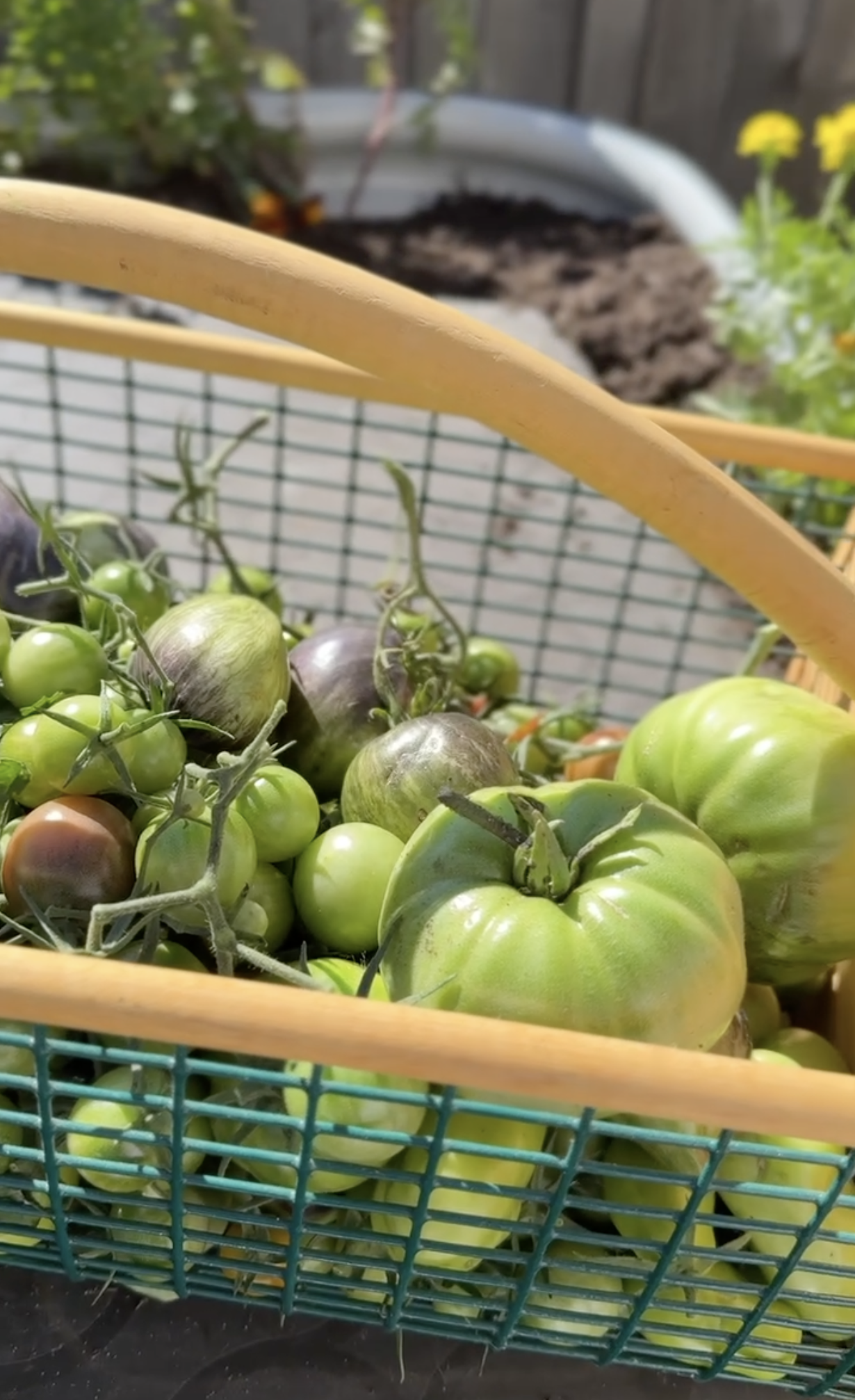How I Prepare my Vegetable Garden for Winter
As the days get shorter and the air turns crisp, I always feel a little sentimental about putting my vegetable garden to bed for the winter. It has worked so hard for me over the winter! And that last tomato harvest is always more than a little sentimental. But this is one of the most important times of the year for my soil — and for the little ecosystem that lives in it. Preparing my garden now means healthier soil, stronger plants, and a space that supports pollinators and wildlife all year long.
Here’s how I prepare my veggie beds for winter while keeping things as eco-friendly and pollinator-friendly as possible.
Timing
I tend to let my vegetable garden go as long as possible. But when the nights are starting to dip into the 30s, it's time to do a final harvest – especially of my tomatoes. Now some years, I keep spinach and other leafy greens going all the way through the winter! See the video below for details!
But for my big veggie bed where I grow tomatoes, peppers, cucumbers, onions, and other basic vegetables, cold nights means nothing else will ripen. So that's when I begin my resetting process for the coming spring.
A Gentle Clean-Up First
The first thing I do is remove any dead or diseased plant material above the soil level. I don’t want to give pests or fungal diseases a place to overwinter. Healthy stems and leaves go into my compost pile, but I leave the roots to decay in the soil.
When I cut back veggie plants, I try not to disturb the soil too much. Many native bees and other pollinators make their nests right in the ground, and I don’t want to evict them. Plus the roots are part of that soil structure – their decomposition will benefit the soil, too.
In my flower beds and pollinator patches, I leave seed heads and hollow stems standing through winter. In fact, with the exception of adding compost, I do almost nothing in these beds until Spring. They might look a little wild, but they provide food and shelter for birds and beneficial insects.
Removing Ollas and Watering Systems
Before it gets too cold, I make sure to pull out my ollas and irrigation lines. I rinse and dry the ollas carefully, then store them in a storage shed that's free from moisture so they don’t crack. It’s a small step, but it keeps my watering tools in good shape for next season.
Ollas are a fabulous way to keep your garden watered efficiently and inexpensively. Learn more:
Spreading Compost — My Garden’s Winter Blanket
Once things are cleared out, I spread a thick layer of compost over my garden beds — usually at least two to three inches deep. I like to think of it as a cozy blanket for my soil. The compost adds nutrients, helps protect against erosion, and encourages worms and microbes to stay active even in the colder months.
If I don’t have enough compost of my own (and I usually don't), I try to find locally-produced compost. And my goal is to find manure-free compost from food waste. It's absolutely superior to any other kind of compost – especially because it tends to be free from weed seed. And I like knowing that I’m keeping nutrients in my local loop.
See it all in action!
It only took about 3 hours to reset this bed. But this video makes it look even faster.
Adding Leaves — Free Mulch from Nature
I used to think of fallen leaves as a mess to clean up, but now I see them as one of the best mulches nature gives us for free. I gather dry leaves from around the yard, shred them a bit, and spread them over my vegetable beds.
The leaves protect the soil from compacting under the snow, retain moisture, and slowly break down into rich organic matter. Plus, they create shelter for all sorts of beneficial creatures — earthworms, beetles, and even overwintering butterflies. It’s amazing how much life is hiding in a simple layer of leaves.
In the spring, I clear off the leaves and add them to my compost pile.
Keeping Pollinators in Mind
Even though my vegetable beds are mostly bare in winter, I always try to keep pollinators in mind. I leave a few hollow stems and small brush piles around the edges of the garden. These spots become winter homes for native bees, ladybugs, and other beneficial insects.
I also keep a few late-blooming flowers in nearby beds — asters and goldenrod and marigolds are some of my favorites — to give the last pollinators of the season a little extra nectar before winter truly sets in.
This Fall Leave the Leaves!
at the close…
Letting my Garden Rest
Once everything is covered in compost and leaves, I try to take a moment to appreciate the stillness. Summer is so busy, and it's important to give thanks to all the tiny creatures and plants that have made the job of raising food for my family possible. My garden looks quiet, but I know there’s so much life beneath the surface — soil microbes working, worms tunneling, pollinators sleeping.
Preparing my garden this way feels like giving back to the land that nourished me all season. It’s not about cleanup and making things tidy. It's about stewardship, connection, and gratitude. When spring comes, the soil will be rich, the garden alive, and the cycle will begin again.
Happy Gardening!
Angela
Subscribe now so you never miss a thing!







